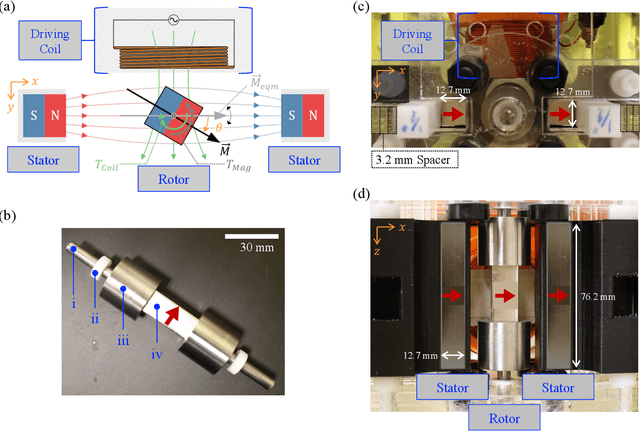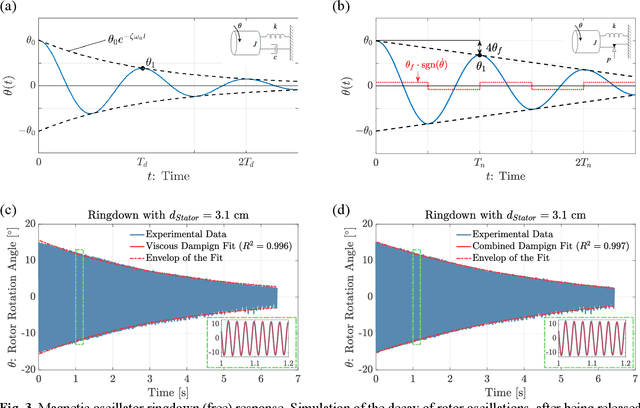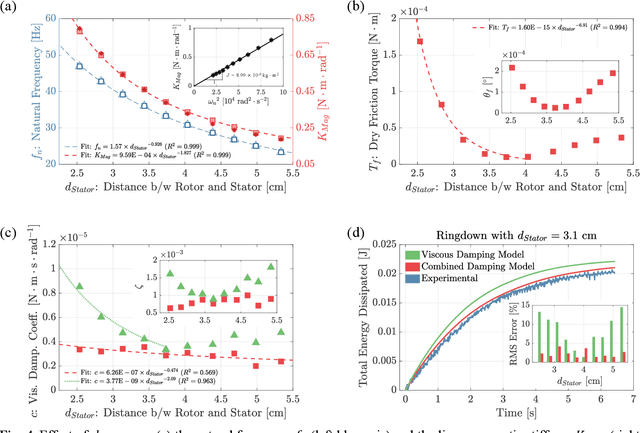Chengzhang Li
MUDAS: Mote-scale Unsupervised Domain Adaptation in Multi-label Sound Classification
Jun 12, 2025Abstract:Unsupervised Domain Adaptation (UDA) is essential for adapting machine learning models to new, unlabeled environments where data distribution shifts can degrade performance. Existing UDA algorithms are designed for single-label tasks and rely on significant computational resources, limiting their use in multi-label scenarios and in resource-constrained IoT devices. Overcoming these limitations is particularly challenging in contexts such as urban sound classification, where overlapping sounds and varying acoustics require robust, adaptive multi-label capabilities on low-power, on-device systems. To address these limitations, we introduce Mote-scale Unsupervised Domain Adaptation for Sounds (MUDAS), a UDA framework developed for multi-label sound classification in resource-constrained IoT settings. MUDAS efficiently adapts models by selectively retraining the classifier in situ using high-confidence data, minimizing computational and memory requirements to suit on-device deployment. Additionally, MUDAS incorporates class-specific adaptive thresholds to generate reliable pseudo-labels and applies diversity regularization to improve multi-label classification accuracy. In evaluations on the SONYC Urban Sound Tagging (SONYC-UST) dataset recorded at various New York City locations, MUDAS demonstrates notable improvements in classification accuracy over existing UDA algorithms, achieving good performance in a resource-constrained IoT setting.
PAMLR: A Passive-Active Multi-Armed Bandit-Based Solution for LoRa Channel Allocation
Oct 07, 2024



Abstract:Achieving low duty cycle operation in low-power wireless networks in urban environments is complicated by the complex and variable dynamics of external interference and fading. We explore the use of reinforcement learning for achieving low power consumption for the task of optimal selection of channels. The learning relies on a hybrid of passive channel sampling for dealing with external interference and active channel sampling for dealing with fading. Our solution, Passive-Active Multi-armed bandit for LoRa (PAMLR, pronounced "Pamela"), balances the two types of samples to achieve energy-efficient channel selection: active channel measurements are tuned to an appropriately low level to update noise thresholds, and to compensate passive channel measurements are tuned to an appropriately high level for selecting the top-most channels from channel exploration using the noise thresholds. The rates of both types of samples are adapted in response to channel dynamics. Based on extensive testing in multiple environments in different cities, we validate that PAMLR can maintain excellent communication quality, as demonstrated by a low SNR regret compared to the optimal channel allocation policy, while substantially minimizing the energy cost associated with channel measurements.
* 10 pages
Mostly Beneficial Clustering: Aggregating Data for Operational Decision Making
Nov 29, 2023Abstract:With increasingly volatile market conditions and rapid product innovations, operational decision-making for large-scale systems entails solving thousands of problems with limited data. Data aggregation is proposed to combine the data across problems to improve the decisions obtained by solving those problems individually. We propose a novel cluster-based shrunken-SAA approach that can exploit the cluster structure among problems when implementing the data aggregation approaches. We prove that, as the number of problems grows, leveraging the known cluster structure among problems yields additional benefits over the data aggregation approaches that neglect such structure. When the cluster structure is unknown, we show that unveiling the cluster structure, even at the cost of a few data points, can be beneficial, especially when the distance between clusters of problems is substantial. Our proposed approach can be extended to general cost functions under mild conditions. When the number of problems gets large, the optimality gap of our proposed approach decreases exponentially in the distance between the clusters. We explore the performance of the proposed approach through the application of managing newsvendor systems via numerical experiments. We investigate the impacts of distance metrics between problem instances on the performance of the cluster-based Shrunken-SAA approach with synthetic data. We further validate our proposed approach with real data and highlight the advantages of cluster-based data aggregation, especially in the small-data large-scale regime, compared to the existing approaches.
Design, Dynamics, and Dissipation of a Torsional-Magnetic Spring Mechanism
Dec 27, 2021



Abstract:We present an analytical and experimental study of torsional magnetic mechanism where the restoring torque is due to magnetic field interactions between rotating and fixed permanent magnets. The oscillator consists of a ball bearing-supported permanent magnet, called the rotor, placed between two fixed permanent magnets called the stators. Perturbing the rotor from its equilibrium angle induces a restoring magnetic torque whose effect is modeled as a torsional spring. This restoring effect is accompanied by dissipation mechanisms arising from structural viscoelasticity, air and electromagnetic damping, as well as friction in the ball bearings. To investigate the system dynamics, we constructed an experimental setup capable of mechanical, electrical and magnetic measurements. For various rotor-stator gaps in this setup, we validated an analytical model that assumes viscous and dry (Coulomb) damping during the rotor free response. Moreover, we forced the rotor by a neighboring electromagnetic coil into high amplitude oscillations. We observed unusual resonator nonlinearity: at large rotor-stator gaps, the oscillations are softening; at reduced gaps, the oscillations stiffen-then-soften. The developed reduced-order models capture the nonlinear effects of the rotor-to-stator and the rotor-to-coil distances. These magnetic oscillators are promising in low-frequency electromagnetic signal transmission and in designing magneto-elastic metamaterials with tailorable nonlinearity.
Reminding the Incremental Language Model via Data-Free Self-Distillation
Oct 17, 2021



Abstract:Incremental language learning with pseudo-data can alleviate catastrophic forgetting in neural networks. However, to obtain better performance, former methods have higher demands for pseudo-data of the previous tasks. The performance dramatically decreases when fewer pseudo-data are employed. In addition, the distribution of pseudo-data gradually deviates from the real data with the sequential learning of different tasks. The deviation will be greater with more tasks learned, which results in more serious catastrophic forgetting. To address these issues, we propose reminding incremental language model via data-free self-distillation (DFSD), which includes self-distillation based on the Earth Mover's Distance and hidden data augmentation. By estimating the knowledge distribution in all layers of GPT-2 and transforming it from teacher model to student model, the Self-distillation based on the Earth Mover's Distance can significantly reduce the demand for pseudo-data. Hidden data augmentation can greatly alleviate the catastrophic forgetting caused by deviations via modeling the generation of pseudo-data as a hidden data augmentation process, where each sample is a mixture of all trained task data. The experimental results demonstrate that our DFSD can exceed the previous state-of-the-art methods even if the maximum decrease in pseudo-data is 90%.
RAN Slicing in Multi-MVNO Environment under Dynamic Channel Conditions
Apr 11, 2021



Abstract:With the increasing diversity in the requirement of wireless services with guaranteed quality of service(QoS), radio access network(RAN) slicing becomes an important aspect in implementation of next generation wireless systems(5G). RAN slicing involves division of network resources into many logical segments where each segment has specific QoS and can serve users of mobile virtual network operator(MVNO) with these requirements. This allows the Network Operator(NO) to provide service to multiple MVNOs each with different service requirements. Efficient allocation of the available resources to slices becomes vital in determining number of users and therefore, number of MVNOs that a NO can support. In this work, we study the problem of Modulation and Coding Scheme(MCS) aware RAN slicing(MaRS) in the context of a wireless system having MVNOs which have users with minimum data rate requirement. Channel Quality Indicator(CQI) report sent from each user in the network determines the MCS selected, which in turn determines the achievable data rate. But the channel conditions might not remain the same for the entire duration of user being served. For this reason, we consider the channel conditions to be dynamic where the choice of MCS level varies at each time instant. We model the MaRS problem as a Non-Linear Programming problem and show that it is NP-Hard. Next, we propose a solution based on greedy algorithm paradigm. We then develop an upper performance bound for this problem and finally evaluate the performance of proposed solution by comparing against the upper bound under various channel and network configurations.
 Add to Chrome
Add to Chrome Add to Firefox
Add to Firefox Add to Edge
Add to Edge